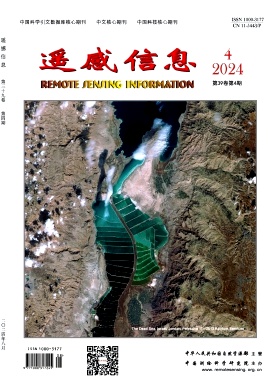Toward consistent global physiognomic vegetation mapping using ERS/JERS SAR classification
引用次数: 1
Abstract
Recent research identified a small number of vegetation characteristics that are essential to describe parameters needed for global atmosphere-biosphere models. Efforts to derive some of these characteristics from satellite remote sensing focussed on the use of AVHRR NDVI datasets, and global land cover characteristics data bases were produced. The usefulness of this dataset is hampered by the fact, that low spatial resolution of the AHVRR data results in the necessary definition of mixed herbaceous/shrub/tree classes, where the % mixture of these basic physiogomic classes are unknown. Radar is known to be very sensitive to vegetation physiognomy and biomass. In a study at the University of Michigan the potential of the existing orbital SAR imaging systems JERS-1 and ERS-1/2 for vegetation mapping has been investigated. Both sensors have mapped the global land masses within a period of four years. Using the complimentary characteristics of frequency (L-, C-Band) and polarization (hh, vv), a classification scheme was developed to produce vegetation maps at a scale of ca. 1:200,000 with classes based on physiognomic characteristics of vegetation. The approach uses unsupervised clustering techniques and class assignment based on radar signatures, hence consistent, automatic classification is possible. The combination of the high spatial resolution of JERS/ERS SAR composites and the high temporal resolution of the AVHRR based datasets could be the winning combination to describe vegetation distribution and vegetation dynamics.利用ERS/JERS SAR分类实现一致的全球地貌植被制图
最近的研究确定了少数植被特征,这些特征对于描述全球大气-生物圈模型所需的参数至关重要。从卫星遥感获得其中一些特征的努力侧重于使用AVHRR NDVI数据集和全球土地覆盖特征数据库。AHVRR数据的低空间分辨率导致混合草本/灌木/乔木类别的必要定义,其中这些基本面相类别的混合百分比未知,这一事实阻碍了该数据集的有用性。众所周知,雷达对植被地貌和生物量非常敏感。在密歇根大学的一项研究中,研究了现有轨道SAR成像系统JERS-1和ERS-1/2用于植被测绘的潜力。这两种传感器都在四年内绘制了全球陆地面积图。利用频率(L-, C-Band)和极化(hh, vv)的互补特征,开发了一种基于植被地貌特征分类的1:20万比例尺植被图的分类方案。该方法使用无监督聚类技术和基于雷达特征的分类分配,因此可以实现一致的自动分类。JERS/ERS SAR复合数据的高空间分辨率与AVHRR数据集的高时间分辨率相结合可能是描述植被分布和植被动态的最佳组合。
本文章由计算机程序翻译,如有差异,请以英文原文为准。
求助全文
约1分钟内获得全文
求助全文
来源期刊
自引率
0.00%
发文量
3984
期刊介绍:
Remote Sensing Information is a bimonthly academic journal supervised by the Ministry of Natural Resources of the People's Republic of China and sponsored by China Academy of Surveying and Mapping Science. Since its inception in 1986, it has been one of the authoritative journals in the field of remote sensing in China.In 2014, it was recognised as one of the first batch of national academic journals, and was awarded the honours of Core Journals of China Science Citation Database, Chinese Core Journals, and Core Journals of Science and Technology of China. The journal won the Excellence Award (First Prize) of the National Excellent Surveying, Mapping and Geographic Information Journal Award in 2011 and 2017 respectively.
Remote Sensing Information is dedicated to reporting the cutting-edge theoretical and applied results of remote sensing science and technology, promoting academic exchanges at home and abroad, and promoting the application of remote sensing science and technology and industrial development. The journal adheres to the principles of openness, fairness and professionalism, abides by the anonymous review system of peer experts, and has good social credibility. The main columns include Review, Theoretical Research, Innovative Applications, Special Reports, International News, Famous Experts' Forum, Geographic National Condition Monitoring, etc., covering various fields such as surveying and mapping, forestry, agriculture, geology, meteorology, ocean, environment, national defence and so on.
Remote Sensing Information aims to provide a high-level academic exchange platform for experts and scholars in the field of remote sensing at home and abroad, to enhance academic influence, and to play a role in promoting and supporting the protection of natural resources, green technology innovation, and the construction of ecological civilisation.

 求助内容:
求助内容: 应助结果提醒方式:
应助结果提醒方式:


